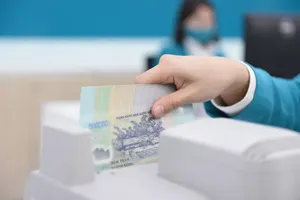
This growth rate exceeded the overall credit growth in the area during the same period, which was 6.87 percent.
According to the State Bank of Vietnam-HCMC Branch (SBV-HCMC), which released the data on December 18, most real estate credit consisted of medium- and long-term loans, making up approximately 96 percent of the total.
Loans for residential purposes, such as purchasing homes, leasing, land-use transfers, building homes, and renovating houses, accounted for the largest share—over 70 percent of total outstanding real estate credit. These loans remain the primary product offered by credit institutions in the city. This segment has experienced strong growth in recent years, closely tied to trends in the real estate market.
Credit for infrastructure development serving business, trade, and services, including export-processing zones, industrial parks, office buildings, and tourism-related properties, also showed robust growth. Outstanding loans for export-processing zones and industrial parks totaled VND52 trillion in the first ten months of 2024, making up 5 percent of total real estate credit and increasing by 28.7 percent compared to the end of 2023.
In addition, real estate credit in HCMC has supported social housing development. As of now, six social housing projects have been announced, with three receiving loans totaling approximately VND729 billion. Among these, VND170.1 billion came from a VND120 trillion credit package for a project to build rental housing for workers in an industrial cluster in Thu Duc City. The other two projects secured standard commercial loans at low interest rates and did not transition to the VND120 trillion package.
Mr. Nguyen Duc Lenh, Deputy Director of the SBV-HCMC, noted that over the past decade, despite credit capital being primarily directed toward supporting production, business development, trade, and services through preferential policies for key economic sectors, outstanding real estate loans have consistently grown during this period.
"In a context where bank credit plays a vital role in socioeconomic development and the real estate market, efficient utilization of credit capital is critically important," Mr. Nguyen Duc Lenh emphasized.
















)

)





